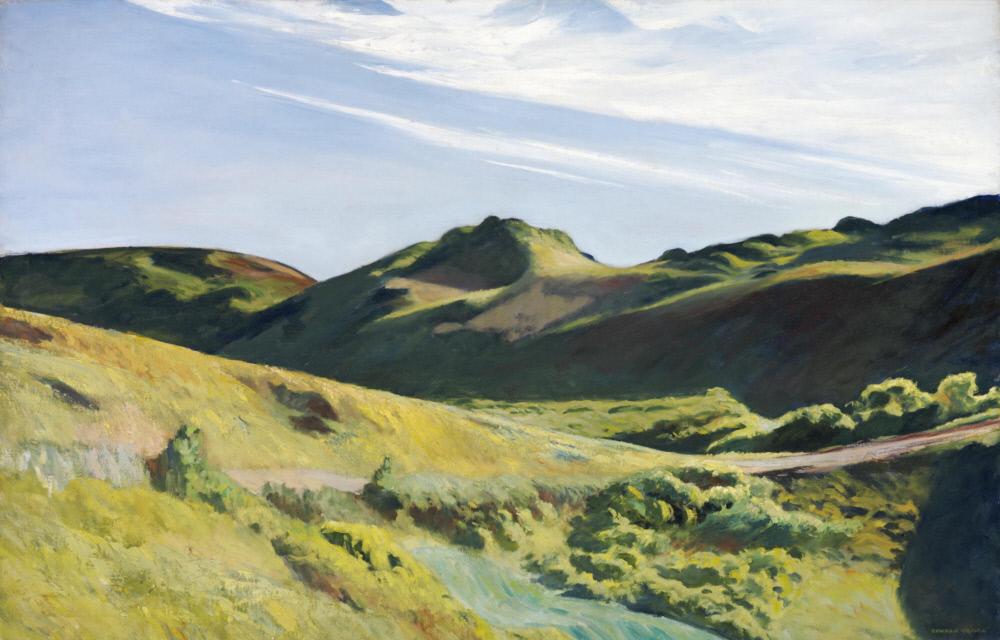Edward Hopper, The Camel’s Hump, 1931

By Adriana Mullin ’21
“The light in the Court is quite changeable and casts a distinctive mood, depending on the time of day or the season. The space glows in sunny summertime, and under a heavy snow all the modernist corners soften.” (Murray, 28). Although Murray primarily discusses architecture, particularly that of the Munson WIlliams Proctor Art Institute, Johnson’s focus on the effect of light in the museum is reflective in Edward Hopper’s painting The Camels Hump”, 1931. The work is a realistic painting of the landscape in Cape Cod, shown through the light shades of greens and yellows that echo the light colors of a sandy coast. The lack of trees also creates the feeling of coastal hills rather than dense forest or mountainous landscapes. The focus on lighting, time of day, and season is evident. The foreground is significantly lighter shades of greens, blues, and yellows compared to the dark shaded hills in the background, reflecting the location of the sun and time of day. The light blue sky and sweeping clouds are reminiscent of the summer. The light foreground in contrast to the darker hills makes the lit up ‘camels hump,’ the tallest point of the hill in the painting, standing out in the center which connects the foreground to the background, bringing the painting together.
Although the painting is of a landscape, it is brought to life by the clear brush strokes, particularly in the foreground, making the grass and bushes look as though they are swaying slightly in a cool breeze that is often present on the coast, from the sea. The curving lines of the hills along with the wispy clouds create a soft calm feeling which is interesting because Edward commented that “There’s something soft about Cape Cod that doesn’t appeal to me too much”1. Despite his dislike of the softness of the Cape’s landscape it is reflected in his painting The Camels Hump. He also however, commented that “there’s a beautiful light there – very luminous – perhaps because it’s so far out to sea; an island almost”2, demonstrating his love of light and intentional use and depiction of it in his work. The title The Camels Hump helps to make the setting of the painting more evident, as a camel is often a symbol of the desert and sand like at the Cape, despite no water or clearly depicted sand in the painting. It also automatically makes the viewer think of the hills as if they are alive like a camel.
References
Hopper, Edward. “The Camel’s Hump.” – Works – EMuseum, 1 Jan. 1970, http://collections.mwpai.org/objects/11100/the-camels-hump?ctx=cbc5b952-3749-4ba5-9cec-8a660d2c6a08&idx=0.